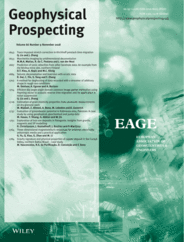-
oa Seismic deconvolution and inversion with erratic data
- Source: Geophysical Prospecting, Volume 66, Issue 9, Oct 2018, p. 1684 - 1701
-
- 18 Mar 2017
- 10 Sep 2018
- 23 Oct 2018
Abstract
If there are some erratic data (e.g. outliers), which may arise from measurement error, or other reasons, in seismic data, the seismic deconvolution and inversion need to be implemented in a way that minimizes their effects. However, the deconvolution and inversion methods based on L2‐norm misfit function are highly sensitive to these erratic seismic observations. As an alternative, L1‐norm misfit functions are more robust and erratic‐resistant. In order to find the solution of the inverse problem constrained by an L1‐norm misfit function, an iteratively re‐weighted least squares algorithm is used frequently. However, it is relatively time consuming. In this paper, we propose a new method based on the sparse signal representation theory. The overcomplete dictionary used for the sparse representation of seismic data with erratic data is composed of two bases: a wavelet basis used for representing the seismic data to implement deconvolution and a Dirac basis used for representing the erratic data. In addition, at the stage of seismic inversion after deconvolution, total variation and a priori model are used as the regularization constraint terms to estimate inversion results with a blocky and laterally continuous structure. The new method is successfully tested on the noisy synthetic seismic data with erratic data. Finally, the proposed method is performed on a real seismic data section, and the inversion results are reasonable, i.e. consistent with the geologic structure of the original seismic data. Compared to the conventional sparse deconvolution and inversion method, the proposed method not only eliminates the effect of outliers, but also has highly improved computational efficiency.




